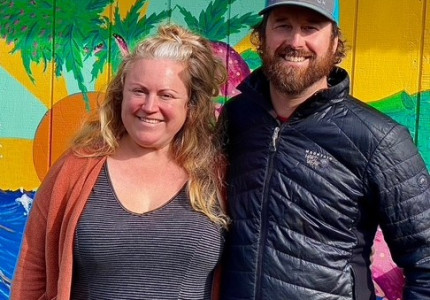The Impassable Rocks are a monumental presence, towering hundreds of feet over the farm belonging to Teresa Sischo and her husband Todd Haendle. At the end of a decidedly rural road, Impassable Farms represents Teresa’s family legacy with the merger of Todd’s experience as a master grower.
 “My Dad came to this area in the 1970’s, growing weed in the Spring Creek area,” Teresa explains. They had 9-to-5 jobs, lived off-grid and developed raw land, growing about 12 plants so we could live comfortably.”
“My Dad came to this area in the 1970’s, growing weed in the Spring Creek area,” Teresa explains. They had 9-to-5 jobs, lived off-grid and developed raw land, growing about 12 plants so we could live comfortably.”
Both Todd and Teresa grew up in Willits, graduating from Willits High. “I remember her,” smiles Todd. “I remember thinking, ‘That guy’s cute, but he’s really too young,’ she laughs. Teresa moved to Holland, then Sonoma and had her son Riley, who helps with the family business.
“I met Todd when I was 25. He was this crazy guerrilla grower who created his own genetics and did everything from indoor to outdoor to dep,” she smiles. “He didn’t grow much. Back then, you didn’t need to.”
“My first year growing was 1991 when I was 16, and I’ve done it every year since.”
Teresa discovered the medicinal benefits of cannabis as a teenager when she used it for insomnia.
“My insomnia was terrible. Mom made tea for me when I was little, but I don’t think it really did anything,” she smiles. “Later, I learned how to roll joints. I’d take tokes and blow the smoke out of my French door windows, put on an Enya CD and fall asleep.”
 Following her high school graduation, Teresa visited Holland in 1990 and was immediately struck by the normality of legalized cannabis.
Following her high school graduation, Teresa visited Holland in 1990 and was immediately struck by the normality of legalized cannabis.
“I was amazed at the cafes.’ They’d hand you a menu featuring different strains. You’d order a brownie, a coffee, smoke weed and play games. I clearly remember thinking, ‘Why isn’t cannabis legal?’ I was coming from an environment where cannabis was part of the reason my parents divorced, and in Holland, it was perfectly accepted, served in a nice environment with people socializing in an ordinary way. I came back here and started trimming.”
Teresa still feels cannabis improves her health.
“I really feel like cannabis helps me with anxiety. I switched over to concentrates because I have a high tolerance. Now, I love growing it. It’s so beautiful to watch as it grows. It makes you feel wonderful.”
Todd began smoking at the age of 18. “My dad was old-school and never smoked. It calms me down and keeps me relaxed. I worked for my dad for 10 years in his machine shop, and it turned out it wasn’t my thing. One thing we did do was make resin traps for Proto Pipes,” Todd smiles.
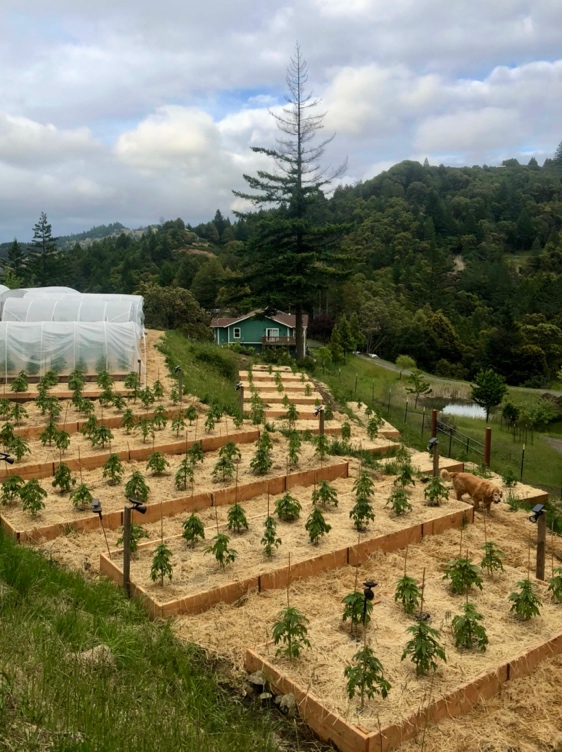 Even though Teresa came from a farming family, she was not actively involved in growing cannabis. “I would sit around with my dad while he was watering plants. I did start trimming at young age and became a preschool teacher. I was the teacher for Todd’s daughter- we both had kids the same age. We started growing weed together and decided to have legitimate business.”
Even though Teresa came from a farming family, she was not actively involved in growing cannabis. “I would sit around with my dad while he was watering plants. I did start trimming at young age and became a preschool teacher. I was the teacher for Todd’s daughter- we both had kids the same age. We started growing weed together and decided to have legitimate business.”
Todd’s family purchased property in 1987, and Todd bought a parcel nearby in the late ‘90’s, where the family now lives. “We’ve always had a big veggie gardens and an orchard,” she notes.
One of Todd’s dreams was to build the family home, and that dream has been realized, with the family’s spacious, modern, high-ceilinged house rivalling anything seen in Sunset Magazine.
“Todd built this house. We used to live in a canvas dome with 25 circular windows and a little trailer outside for the kitchen. Over the years, there were a couple times when our road washed out. We’d have ne car on each side of the washout, hauling gasoline, propane, food and little children back and forth,” smiles Teresa.
“When my parents sold us this land, initially they didn’t want us to grow, but they’ve lightened up over the years,” Teresa explains. The family is permitted for a 5,000 square-foot garden.
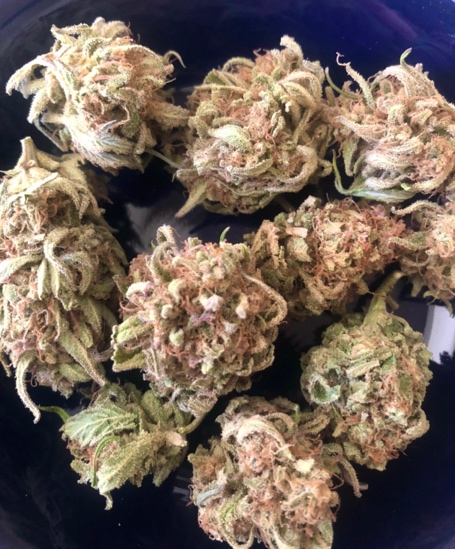 “We have a spring and a lot of water storage, but we wouldn’t want to grow more due to the water situation. At one point we got a letter from state, saying our spring was a tributary of the Russian River and could only be used for bathing and drinking. We called our attorney and now have one spring for cannabis and one for domestic use,” says Teresa.
“We have a spring and a lot of water storage, but we wouldn’t want to grow more due to the water situation. At one point we got a letter from state, saying our spring was a tributary of the Russian River and could only be used for bathing and drinking. We called our attorney and now have one spring for cannabis and one for domestic use,” says Teresa.
“Todd’s up in the garden before me, at 6:30 every morning,” Teresa notes. “It’s a lifestyle you have to commit to- to be able to stay out here, build up your land and survive.”
“Back when I started, I grew about 10 pounds per year and was making $5,000 per pound. I’d work really hard. I’d hike forever. Everything had to be covered, but the upside was that those pounds were sold before they were even harvested,” says Todd.
Todd’s been working diligently on developing and improving his legacy strain- Black Garlic.
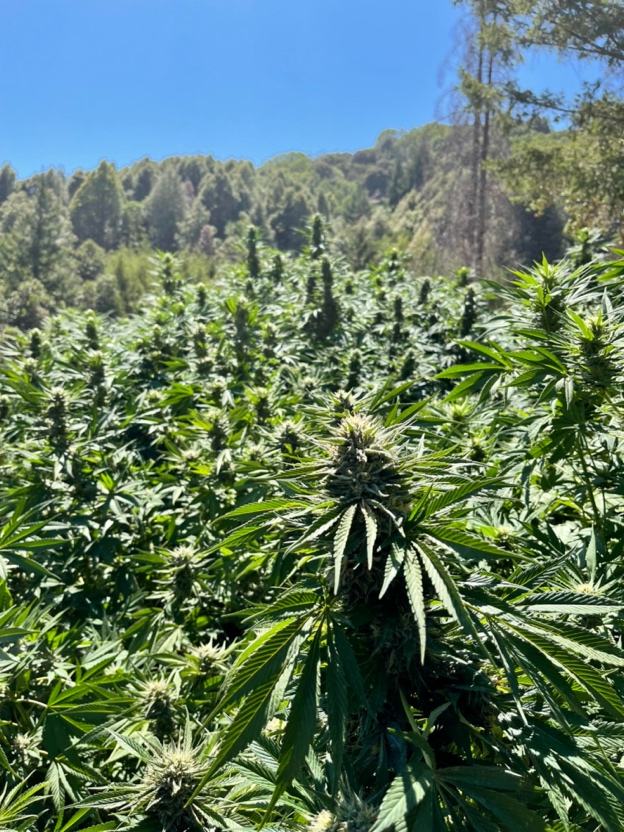 “We’ve been producing that strain for about 15 years,” Todd continues. “It was given to me by my cousin. It started showing buds by the middle of August. I remember thinking, ‘How is this even possible?’ It’s very hard to find weed that’s finished that early. I got seed stock and that became our moneymaker. It was fresh and super-strong. I started crossing it to increase desirability. By itself, it’s super earthy, with pine and mushroom overtones. I crossed it with Berry White, Headband, Lemon Drip and Grease Monkey. We were able to harvest in August and replant in the same hole. I can’t say I know of anyone who could do that.”
“We’ve been producing that strain for about 15 years,” Todd continues. “It was given to me by my cousin. It started showing buds by the middle of August. I remember thinking, ‘How is this even possible?’ It’s very hard to find weed that’s finished that early. I got seed stock and that became our moneymaker. It was fresh and super-strong. I started crossing it to increase desirability. By itself, it’s super earthy, with pine and mushroom overtones. I crossed it with Berry White, Headband, Lemon Drip and Grease Monkey. We were able to harvest in August and replant in the same hole. I can’t say I know of anyone who could do that.”
“We had to continue crossing it to get our THC levels up, so it’s been a while since we’ve grown straight Black Garlic,” Todd notes. “Now we harvest in early September, so it’s harder to get that second crop.”
“We grow organically, using regenerative farming practices,” says Todd. The family is still waiting for their inevitable Fish and Wildlife inspection.
“We put in a culvert on Valentine’s Day,” laughs Teresa, noting it wasn’t the most romantic way to celebrate the holiday. “It was insane. It was pouring rain, and there we were, pushing that thing into place during a rainstorm.”
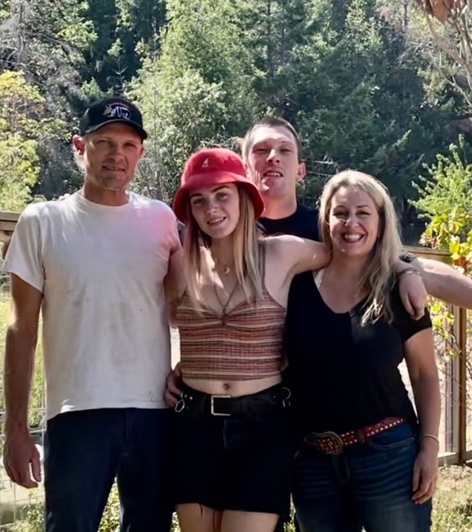 “We haven’t had the big guys up here yet,” says Todd. “We’re still waiting for how that works out, but our third-party water board guy says we’re doing fine.”
“We haven’t had the big guys up here yet,” says Todd. “We’re still waiting for how that works out, but our third-party water board guy says we’re doing fine.”
“We’ve spent more than we’ve ever had on infrastructure,” says Todd. “We have to pay more attention to the environment. Fires are a real issue. It would be devastating for us if we were to lose this land.”
“We would like to be successful doing what we’re doing and grow some nice, popular strains this season- strains that are fun to grow and some of our own strains that we haven’t gotten to grow in some time,” Todd notes.
He is experimenting with placing reemay cloth over his beds.
“I saw a guy in Lake County try it out, and his flower looked exactly like indoor. With the reemay, the plants don’t get as intense sunlight, so the sun doesn’t penetrate as much on the trichomes. The market doesn’t like to see too many of those golden trichomes.”
“We put our whole life into this, and like everyone, we’re lucky if we net a third of what we used to get. There’s no breaks at all. We’ve had one vacation since we met, 22 years ago. We’re hoping to be able to continue, to just keep rolling,” Teresa smiles.
Impassable Farms entered Lemon Drip x Headband- Sour Grease for the Kure Mendocino Invitational. Follow them on Facebook and Instagram.


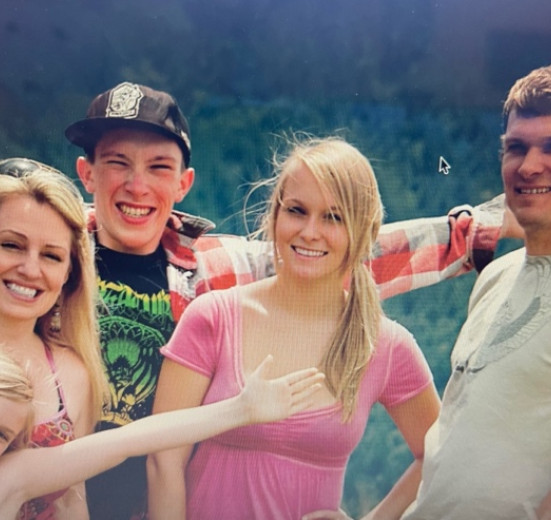

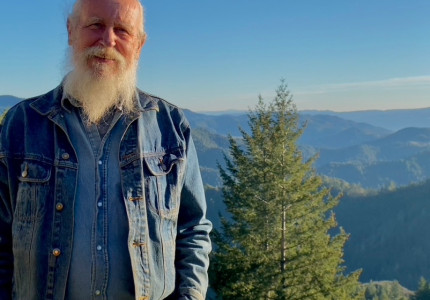
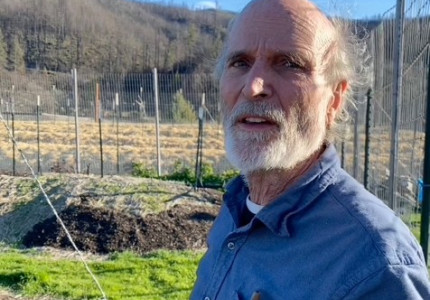
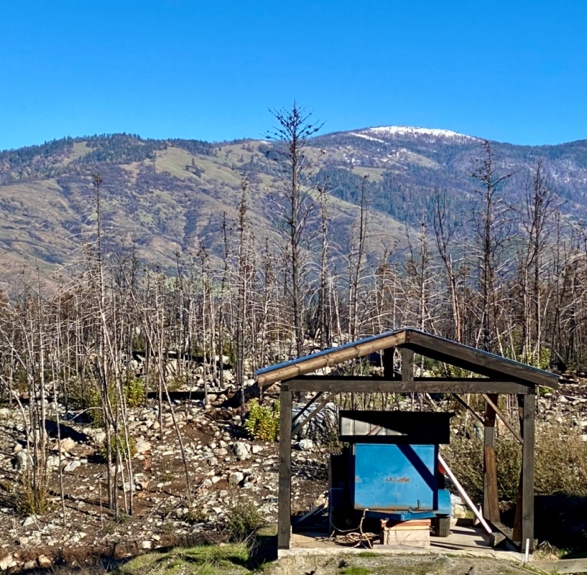 “I’ve only quit smoking three times since 1964,” he smiles.
“I’ve only quit smoking three times since 1964,” he smiles.